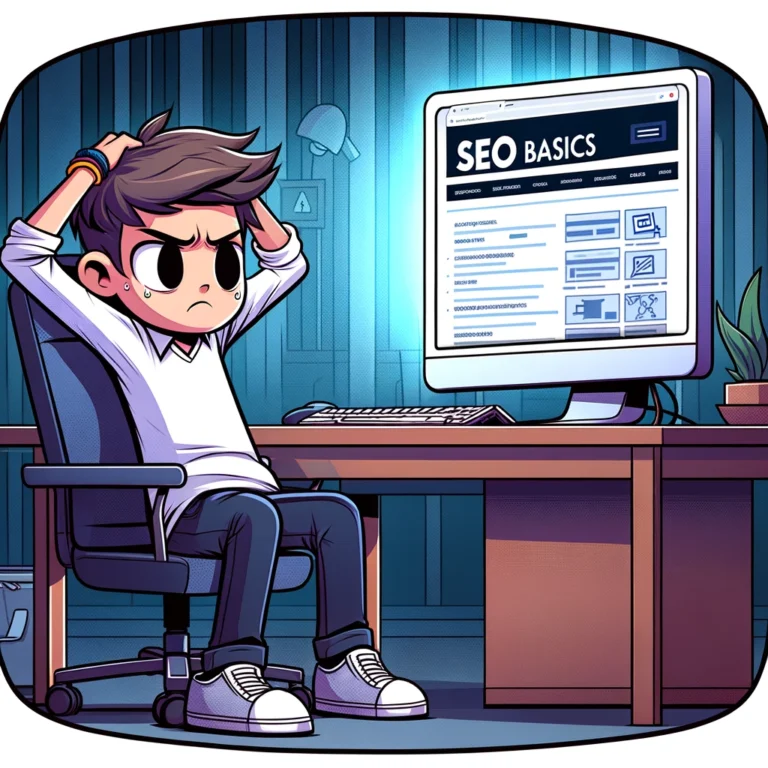When it comes to DIY SEO, staying ahead of Google’s algorithm updates is akin to preparing for a change in weather—it’s essential, unpredictable, and can have a huge impact on your site’s visibility. These updates can be minor tweaks or major overhauls aimed at improving the way Google understands and ranks web pages. Here’s how to ensure your website remains friendly to both users and the search giant, no matter what changes come your way.
Understanding Google Algorithm Updates
Google continually adjusts its algorithm to provide the best possible user experience, focusing on relevance, authority, and utility of content. These updates are designed to penalize sites that employ manipulative SEO practices and to reward those that offer genuine value to users. Staying informed about these changes can seem daunting, but it’s crucial for maintaining your site’s search engine visibility.
Keep Informed About Recent Updates
The first step in preparation is to stay informed. Google occasionally announces major updates, like the Panda and Penguin, which significantly affect search rankings. For the unannounced tweaks, SEO news sites, forums, and Google’s own blogs offer valuable insights into what changes have been made and how they could impact your strategy.
Adjusting Your SEO Strategy
Preparing for an algorithm update isn’t just about reacting to changes; it’s about proactively optimizing your website to align with Google’s core principles: providing valuable content and a great user experience.
Focus on Quality Content
Content is the cornerstone of any effective SEO strategy. High-quality, engaging, and original content not only attracts more visitors but also keeps them on your page longer, reducing bounce rates and increasing the likelihood of conversions. Ensure that all pieces of content you publish serve a clear purpose and add real value for your audience.
Enhance User Experience
User experience (UX) plays a crucial role in SEO. A site that is easy to navigate, loads quickly, and is mobile-friendly, provides a better user experience and, consequently, tends to rank higher in search results. Regularly check your site’s usability—consider factors like page speed, mobile responsiveness, and intuitive navigation.
Build a Natural Link Profile
Backlinks are vital for SEO, but the focus should always be on quality over quantity. A natural link profile with links from reputable and relevant sources will be more beneficial than many low-quality links. Cultivate relationships with authoritative domains in your niche for guest posts, and provide content that others find valuable enough to link to organically.
Monitoring Your SEO Performance
Implementing SEO techniques is just one side of the coin; equally important is monitoring their performance and adjusting tactics as necessary to align with new algorithm updates.
Use Tools to Track Progress
Several SEO tools, both free and paid, can help you monitor your website’s performance and identify areas that need improvement. Google Analytics, Google Search Console, and other third-party tools like Ahrefs or SEMrush offer comprehensive insights into your website’s traffic, ranking keywords, backlink profile, and other critical SEO metrics.
Regularly Audit Your Website
Routine SEO audits are crucial for uncovering underlying issues that could be affecting your search engine rankings. This includes checking for broken links, duplicate content, slow-loading pages, or improper use of keywords. Fixing these issues can enhance your site’s SEO performance and make it more adaptable to algorithm changes. Preparing for Google’s frequent algorithm updates can seem like an overwhelming task, but by focusing on quality content, a standout user experience, and regular performance monitoring, you can ensure your site stands the test of time. Remember, the goal of any update is to help users find the best possible information—it’s your job to make sure it’s found on your site.

Embracing the Role of Social Signals
While the exact role of social signals in Google’s algorithm is often debated among SEO professionals, their indirect impact on SEO is undeniable. Engaging actively on social media can amplify your content’s reach, driving traffic to your website and increasing brand visibility. These activities can lead to higher engagement rates and potentially more backlinks as users share and reference your content within their own networks.
Prioritize Engagement Over Mere Presence
Merely having social media accounts isn’t enough. The key is to engage with your audience. Respond to comments, participate in discussions, and create content that encourages interaction, such as polls or questions. This not only enhances your reputation but also increases the likelihood that your followers will share your content, thereby boosting your website’s visibility indirectly.
Leverage Different Platforms
Different social media platforms cater to different demographics and content formats. For instance, Instagram and Pinterest are highly visual, making them ideal for industries like fashion or travel. LinkedIn, on the other hand, is perfect for B2B companies looking to share more professional content. Understanding where your audience spends their time and tailoring your strategy accordingly can enhance your outreach and improve your site’s traffic.
Integrating Structured Data
Structured data is a standardized format used to provide information about a page and classify the page content. If you’re aiming for high SERP visibility, structured data can be your best ally. It helps Google to not only crawl your site more effectively but also to understand the contents of your pages better, which can influence rankings positively.
Why Schema Markups Matter
Implementing schema markups can significantly boost your SEO by making your pages appear richly in SERPs with snippets that stand out. Whether it’s reviews, events, or recipes, enriched snippets can increase click-through rates by providing key information directly in the search results, all of which signal relevance and usefulness to Google’s algorithm.
Tools to Implement Structured Data
Fortunately, adding structured data to your website doesn’t require extensive coding knowledge. Tools like Google’s Structured Data Markup Helper can guide you through the process. By enhancing your pages with structured data, you provide clear cues to Google about the purpose and content of each page, which is particularly beneficial ahead of algorithm updates that further refine how content quality is assessed. Focusing on these elements not only prepares you for upcoming Google algorithm updates but also aligns your website with best SEO practices that cater to evolving user needs and search engine criteria.
Cultivating Community Through Content
In the world of SEO, community building isn’t just about having followers; it’s about creating a space where dialogue and interaction thrive. When your audience feels valued and engaged, they’re more likely to become ambassadors for your content, enhancing your social signals without overt solicitation. This community-oriented approach can indirectly influence your SEO by nurturing a loyal audience that’s ready to share and promote your content organically.
Creating Shareable Content
The essence of powerful social media influence lies in shareable content. When crafting content, consider what drives your audience to engage and share. Are they looking for solutions, entertainment, or community validation? By aligning your content with the needs and wants of your audience, you create natural opportunities for engagement. Content that resonates on a personal level is often seen as worth sharing, which can extend your reach and amplify your presence across various platforms.
Encouraging User-Generated Content
Another robust strategy to boost engagement and enhance SEO is through user-generated content (UGC). By encouraging your followers to contribute their own content—be it reviews, testimonials, or photos—you leverage their networks and increase your content’s authenticity and reach. For instance, running a photo contest on Instagram or asking for customer stories on Facebook not only engages users but also produces valuable content that can be repurposed to enhance your site’s freshness and relevance, factors appreciated by both users and search engines alike. By fostering a dynamic online community and focusing on creating and curating engaging, shareable content, you set the stage for a self-sustaining cycle of interaction, visibility, and SEO benefit. This strategic focus shifts the paradigm from sheer numbers to meaningful interactions, forging a path to both improved search engine rankings and deeper customer relationships.
Sealing the Community Bond
In embracing the strategies discussed, from generating shareable content to encouraging community contributions, we’re not just playing the SEO game—we’re changing its rules. This inclusive approach builds a vibrant online ecosystem that breathes life into every post, tweet, and share, creating a digital space that feels like home. Rounding off the cycle of sustained engagement and visibility, a content-driven community keeps evolving. As it grows organically, so does your content’s reach and influence, drawing in new audiences while deepening bonds with existing ones. By crafting content that speaks to and springs from the community, you ensure that every piece resonates, fostering an environment where every member feels compelled to participate and advocate.
Transforming casual followers into committed community members doesn’t just happen; it requires dedication, creativity, and an authentic commitment to interactive dialogue. Yet, the rewards—richer content, deeper engagement, robust SEO, and genuine relationships—underscore the potency of integrating community building with content strategy. Embrace this journey of community cultivation, where every comment, like, and share not only elevates your SEO but also fortifies the very foundations of your digital enclave. In this dynamic and interconnected environment, content isn’t just seen—it’s experienced, lived, and celebrated together. As you continue to adapt and innovate, remember that the heart of community building is not in the algorithms or analytics, but in the human connections that your content inspires.
References:
- Schwartz, B. (2021). “Navigating the challenges of Google’s algorithm updates.” Search Engine Roundtable.
- Google Search Central. (2022). “How Search algorithms work.”
- Patel, N. (2020). “The Ultimate Guide to Google Algorithm Updates & Changes.” Neil Patel Blog.
- Fishkin, R. (2022). “Predicting and preparing for future Google updates.” Moz Blog.
- Chaffey, D. (2019). Digital Marketing: Strategy, Implementation and Practice. Essex: Pearson Education Limited.
- Sullivan, D. (2021). “How Often Does Google Update Its Algorithm?” Search Engine Journal.
- Enge, E. (2018). “A CEO’s Survival Guide to Google Algorithm Changes.” Stone Temple Consulting.
- Piatetsky, G. (2019). “How machine learning is transforming search.” KDnuggets.



